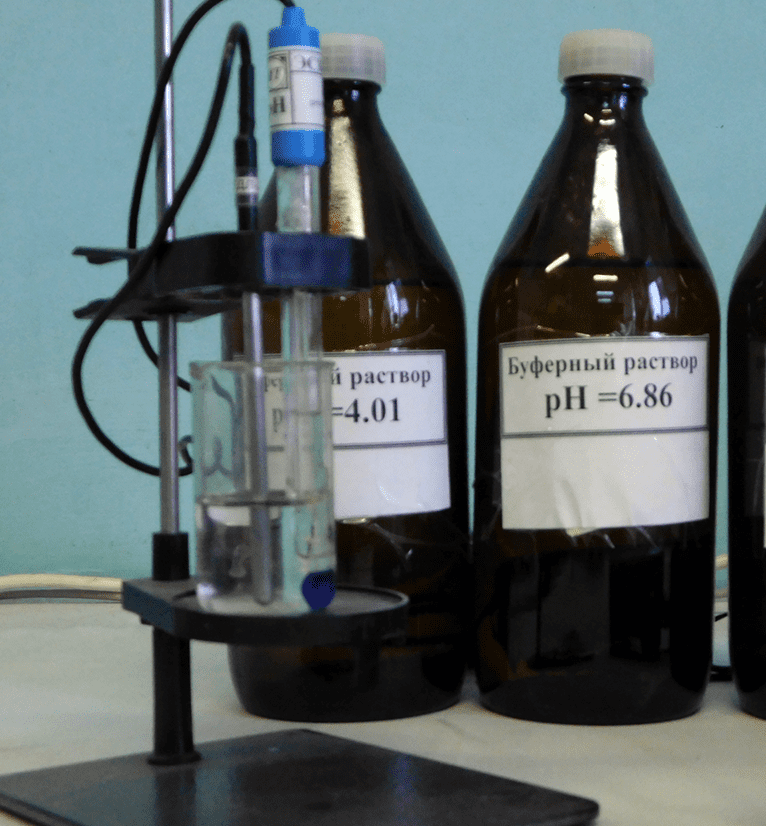In daily water quality testing, nitrate can use disulfonic acid phenol photometry or ultraviolet photometry, but both of these methods can only measure drinking water and groundwater with a small content. As for sewage or industrial wastewater with a large content, we need to use some other methods, for example, electrodes can be used to detect. At present, the range of nitrate electrode determination of nitrate nitrogen in urban sewage is 0.16mg/L-1000mg/L. Compared with the first two methods, it can adapt to more complex water samples.

Principle of Electrode Method to Detect Nitrate Nitrogen
The nitrate ion selective electrode is a selective electrochemical sensor. When it forms a working battery with the reference electrode, it can convert the non-electric solution ion activity into a potential. When the total ionic strength in the sample is adjusted to At a certain value, the electromotive force E of the battery changes with the change of the ion concentration in the tested sample.
Reagents and equipment used for testing
1. Sodium hydroxide solution
Weigh 20g of sodium hydroxide and dissolve in 100mL of water.
2. Buffer solution (pH value is about 3)
Weigh 6.66g aluminum sulfate, 3.12g silver sulfate, 1.24g boric acid and 1.94g sulfamic acid in 600mL water, adjust the pH to 3 with the prepared sodium hydroxide solution, and dilute to 1000mL.
3. Nitrate nitrogen standard stock solution 100mg/L
Weigh 0.7218g of premium-grade pure potassium nitrate dried at 105-110°C for 2 hours, dissolve it in first-grade reagent water, transfer it into a 1000mL volumetric flask, and dilute to the mark.
4. Standard use liquid of nitrate nitrogen 50mg/L
Pipette 50mL of 100mg/L nitrate nitrogen standard stock solution into a 100mL volumetric flask, dilute to the mark, and gently shake it evenly.
5. Standard use liquid of nitrate nitrogen 10mg/L
Pipette 100mg/L nitrate nitrogen standard stock solution 10mL to a 100mL volumetric flask, dilute to the mark, and shake well.
6. Standard use of nitrate nitrogen 1.0mg/L
Pipette 100mL nitrate nitrogen standard stock solution 1.0m into a 10L volumetric flask, dilute to the mark, and shake well.
7. Ion activity meter
8. Nitrate electrode
9. Reference electrode
10. Magnetic stirrer and stirring beads (stirring rod)

Water sample collection and storage
Be careful when collecting water samples and try to use clean glass bottles. Shake and wash with pure water several times before use, and test as soon as possible after collection, and the time should not exceed 24 hours. If the test cannot be performed within the specified time, add 40 mg of mercury chloride to each liter of the sample and store it in a refrigerator at 4°C.
Water sample testing steps
1. Operation steps
Before testing, the samples and standard solutions should be brought to room temperature (the temperature difference should not exceed ±1℃, and the room temperature should be controlled within 0℃-40℃). Accurately measure an appropriate amount of water quality sample to obtain the supernatant (if the sample is less than 50mL, add first-grade pure water to 50mL), add 2mL buffer solution, put in the stirring beads, insert the nitrate electrode and the reference electrode, and stir on the stirrer Until the instrument reading is stable, write down the potential value E.
2. Draw a standard curve
Take each 50mL of 1.0mg, 10mg/L, 50mg/L standard use solution into a 100mL dry beaker, and then determine in sequence according to the detection operation steps, record the potential value E, and draw the E~1gC working curve. Calculate the content of nitrate nitrogen in the water sample according to the corresponding formula.

Interference during detection and its elimination method
1. Bicarbonate ions in the water sample will seriously interfere with the determination of nitrate, and a buffer solution with a pH of 3 can be added to eliminate it.
2. Chloride ions, bromide ions, iodide ions, sulfide ions and cyanide ions in the water can interfere with the determination of nitrate, which can be eliminated by adding silver sulfate to the water sample.
3. Suspended impurities, most metal ions, and high content of organic acids in the water sample can also interfere with the determination of nitrate. These substances can be eliminated by the adsorption and sedimentation of aluminum hydroxide colloids produced by aluminum sulfate under alkaline conditions.
The above is the use of electrode method to detect the content of nitrate nitrogen in water。



